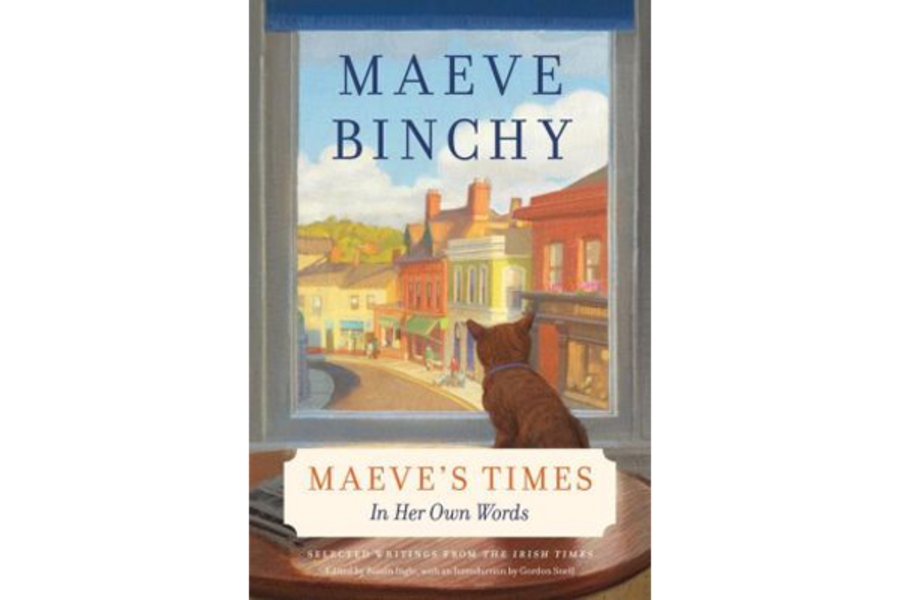'Maeve’s Times' brings Maeve Binchy's intimate, irreverent voice back to life
Loading...
By the time of her death in 2012 at age 72, Irish author Maeve Binchy had gained international popularity as a writer of novels with special appeal to women. What’s less known, particularly among her American readers, is that Binchy first honed her craft as a columnist for The Irish Times.
Maeve’s Times collects some of her best work from the newspaper where she worked from the 1960s through the 1980s. There are also some essays from later years, when Binchy had left full-time journalism, yet continued to contribute an occasional essay to The Times. The book’s key audience promises to be diehard Binchy fans who want to revisit a voice they grew to love in such novels as “Minding Frankie,” “Heart and Soul,” “Circle of Friends” and “Tara Road,” which was an Oprah’s Book Club selection. Other readers might be less impressed with this essay collection, which seems to simply assume an audience for the book rather than attempting to build one.
The title, “Maeve’s Times,” has a double meaning, referring not only to the paper where Binchy learned to write, but the era when she rose to prominence. At its best, Binchy’s wry, self-effacing style reminds one of a Celtic Nora Ephron. Like Ephron, Binchy entered professional life in that “Mad Men” period when women were generally dismissed as afterthoughts around the office. Many of her columns used puckish humor to confront the challenges women had – and continue to have – in reconciling cultural ideals of femininity with practical realities. In a 1969 essay, “Thinking About Underwear Down Under,” she ponders the bargain between sex appeal and durability for intimate apparel. “As it stands,” she laments, “one can often be in the lovely position of having to choose between something that looks like a stocking and lasts three days, or something that will last but looks like a surgical bandage.” In her 1973 account of the wedding of Mark Phillips and Princess Anne, also reprinted here, Binchy broke tradition by writing of the royals not as icons, but comically flawed human beings. “The Queen looked thin and unhappy in a harsh blue outfit,” Binchy reports. “Princess Margaret read her programme of the wedding service as if it were the latest Agatha Christie that she had promised to finish before lunchtime.”
Some of the columns are more serious. One commentary, “Anna’s Abortion,” deals with a young woman making a profound, life-altering choice. In these columns, as in her novels, Binchy often throws a spotlight on strong, imperfect women confronting complicated challenges.
These essays, like Binchy’s fiction, also embrace a familiar, conversational tone. “Maeve followed the advice she often gave to aspiring writers – to write as you speak,” her husband and fellow author, Gorden Snell, tells readers in a preface to the collection. “Her view of the world and the people in it was the same in her writing as it was in her life: she was compassionate and perceptive, she treated everyone with the same considerate interest, and her humour was uproarious but never sneering or cruel.”
Binchy addressed her Irish fans as neighbors, an intimacy that can leave American readers feeling as if they’re eavesdropping on an inside joke. These essays teem with cultural references largely unfamiliar to those of us on the other side of the Atlantic. In “Women Are Fools – Mary,” an essay about a young woman’s troubled romantic life, Binchy mentions Mary “doing the Hdip,” which a quick visit to Google interprets as preparing for an advanced degree. “But Does Anybody Care?,” an essay on British trivia, opens with this cryptic sentence: “Perhaps it matters to you that Hull is 226 miles from Brighton and that there are 40 poles (or perches) to the rood.”
A handful of these obscurities might sound charming – like watching an episode of “Masterpiece Theatre” – but they surface so often in “Maeve’s Times” that the book can become an exhaustive exercise in translation. Footnotes would have helped greatly, and their absence makes the reader feel as if he’s watching a foreign language film that lacks subtitles.
To read “Maeve’s Times” is to be reminded that while some journalism is timeless, most of it dates pretty quickly. Binchy’s irreverent observations of Neil Kinnock, for example, will resonate only for those of us who can remember him as a candidate for British prime minister in the 1990s.
Within “Maeve’s Times” is a smaller, more engaging book trying to get out. Many of the these essays have yellowed irreparably with the decades, but there’s just enough here to remind us what Binchy brought to the world, perhaps more abidingly, in her fiction.
Danny Heitman, a columnist for The Advocate newspaper in Louisiana, is the author of “A Summer of Birds: John James Audubon at Oakley House.”








